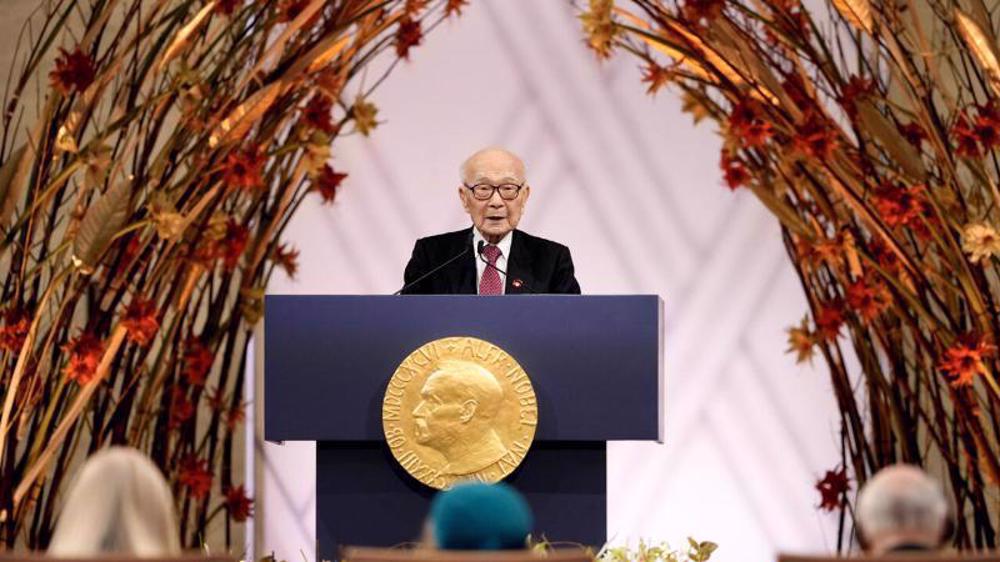Japan debating pre-emptive strike ability in face of N Korea ‘threats’
Japan is reportedly considering the development of a limited pre-emptive strike capability and purchasing cruise missiles in response to what it regards as North Korea’s growing missile threats.
North Korea’s latest test of a missile, which traveled over Japan before landing into the ocean, has renewed a debate in the Pacific nation over the possibility of pre-emptive strike, the Associated Press reported.
The potential acquisition of pre-emptive strike capability was officially proposed to Japanese Prime Minister Shinzo Abe by his party’s missile defense panel back in March.
It prompted a parliamentary debate over the idea but then lost steam after Abe apparently tried to avoid the divisive issue amid his falling popularity ratings.
North Korea on Tuesday fired a Hwasong-12 missile — reportedly capable of carrying a nuclear payload — that traveled nearly 2,700 kilometers into the Pacific and triggered alert warnings as it flew over northern Japan.
“North Korea has demonstrated its capability to hit targets anywhere in Japan,” said Narushige Michishita, a defense expert at the National Graduate Institute for Policy Studies. “It has become even more important for Japan to improve its missile and civil defense capabilities, and seriously think about acquiring limited but meaningful strike capabilities.”
The North also tested two intercontinental ballistic missiles in July and has further threatened to target the US Pacific territory of Guam, home to key military installations, with its missiles.
Pyongyang already possesses short-range missiles that reach Japan and has possibly achieved miniaturized nuclear warheads, according to an annual report by Japan’s Defense Ministry.

Japan currently possesses a two-step missile defense system, including interceptors on destroyers in the Sea of Japan that would shoot down missiles mid-flight and if that fails, surface-to-air PAC-3s would intercept the projectiles within a 20-kilometer range.
A preemptive strike however, by Japanese definition, would involve firing cruise missiles -- such as Tomahawk -- launched from destroyers or war planes, which would target enemy missile clearly waiting to be fired, or just after blastoff from a North Korean launch site, before it approaches Japan.
Abe described Pyongyang’s missile launch on Tuesday as “unprecedented, grave and serious threat.”
Japan’s Defense Minister Itsunori Onodera, who also advocates bolstering of the country’s missile and strike-back capability, insisted that more provocations by North Korea are likely, and that Tokyo must quickly upgrade its missile arsenal.
The Defense Ministry further announced on Thursday that a record 5.26 trillion yen ($48 billion) budget for fiscal 2018, which would cover purchase of upgraded missile defense systems such as land-based Aegis Ashore interceptors or the Terminal High-Altitude Area Defense, or THAAD, a mobile equipment Washington and Seoul have installed in South Korea.
However, Beijing -- which insists that THAAD’s powerful radar can reach deep into the Chinese territory and wants it removed -- could react harshly if the system is installed in Japan.
Since taking office five years ago, Abe has expanded Japan’s military role, allowing it to take on a greater task in international peacekeeping.
In 2015, his government allowed Japan to fight for its allies when they come under enemy attack, a condition known as collective self-defense, by re-interpreting part of the constitution and railroading a new security legislation that sparked massive protests.
Israeli strikes on north Gaza hospital ‘extremely dangerous, terrifying’: Director
VIDEO | Yemen targets Tel Aviv with Palestine 2 missiles
Pezeshkian: Iran resolved to complete North-South Transport Corridor
VIDEO | Iran-Syria: For Resistance
Qassam Brigades claims killing 3 Israeli troops in northern Gaza
More alive than ever: Sayyed Hassan Nasrallah's legacy grows stronger in martyrdom
Occupation of Syria’s highest peak Mount Hermon part of ‘Greater Israel’ project
Iran: Syrian people will decide their future without foreign interference













 This makes it easy to access the Press TV website
This makes it easy to access the Press TV website